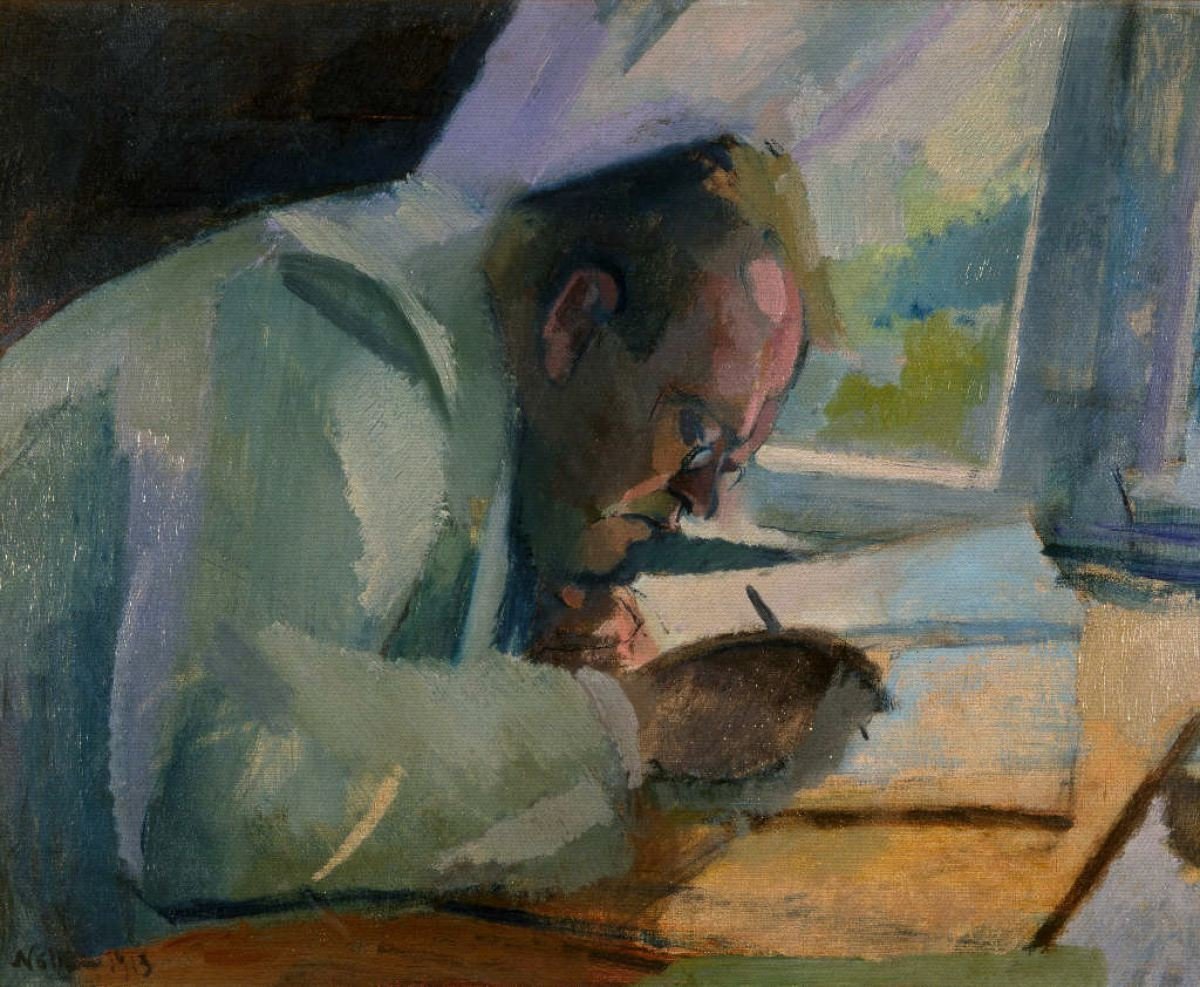Composed 1887 (1887)–1916 | ||
 | ||
Max Reger was a German composer of the late-Romantic period. His works are initially listed by Opus number (Op.), followed by works without Op. number (WoO). Other features shown are translation of titles, key, scoring, year of composition, genre, information about texts and their authors, a link to the Max-Reger-Institute, which provides detailed information about times of composition, performance and publishing, and a link to the free score when available.
Contents
History
Reger was a German composer, born in Brand in 1873. He studied music theory in Sondershausen, then piano and theory, in Wiesbaden. The first compositions to which he assigned opus numbers were chamber music and Lieder. A pianist himself, he composed works for both piano and organ.
Reger returned to his parental home in 1898, where he composed his first work for choir and orchestra, Hymne an den Gesang (Hymn to singing), Op. 21. He moved to Munich in 1901. In 1907 he was appointed musical director at the Leipzig University and professor at the Royal Conservatory in Leipzig.
In 1911 Reger was appointed Hofkapellmeister (music director) at the court of Duke Georg II of Saxe-Meiningen, retaining his master class at the Leipzig conservatory. In 1913 he composed four tone poems on paintings by Arnold Böcklin (Vier Tondichtungen nach A. Böcklin), including Die Toteninsel (Isle of the Dead), as his Op. 128. He gave up the court position in 1914 for health reasons. In response to World War I, he thought in 1914 already to compose a choral work to commemorate the fallen of the war. He began to set the Latin Requiem but abandoned the work as a fragment. In 1915 he moved to Jena, still teaching in Leipzig. He composed in Jena the Hebbel Requiem for soloist, choir and orchestra. Reger died in Leipzig on 11 May 1916.
Reger assigned opus numbers to major works himself. In his compositions for solo voices and for choirs, he set poems by notable lyricists, including contemporaries, such as Gabriele D'Annunzio, Otto Julius Bierbaum, Joseph von Eichendorff, Friedrich Hebbel, Detlev von Liliencron and Friedrich Rückert.
Table of compositions
Reger's works with an opus number are listed first, then works designated as WoO (work without opus number). Details to compositions follow, such as song titles and names of poets for a collection of songs. The listing is completed by works without opus number (WoO). The scoring is given if it can not be recognized from the title and/or the genre, for example songs (Lieder, Gesänge) are normally for voice and piano, in a sonata the named solo instrument is usually accompanied by piano, choral works are for four-part choir a cappella, unless otherwise noted.
When the opus number provides a link, it leads to more details about a work, such as the titles, markings and keys of its parts. The last column provides two link for reference, when available: one to the detailed information on the piece by the Max-Reger-Institute (in German), which appears as "MR" and the number on the website, the other to a free score (sc).
Other works
- Miniature Gavotte (s.a.)
- Allegretto grazioso
- Andante
- Romanze, D major (1906)
- Improvisation, E minor (1901)
- Nachtstück (1903)
- Perpetuum mobile, C major (1902)
- Caprice, F-sharp minor
- Prelude and Fugue, C major
- Fantasy on 'Te Deum laudamus', A minor
- Fugue, D minor
- Introduction (Grave) and Fugue (Allegro ma non tanto)
- Adagio assai
- Intermezzo (Un poco Allegro, ma non troppo) and Trio (Andantino)
- Passacaglia (Andante)
- "Passionslied"
- "Doch du ließest ihn im Grabe nicht!"
- "Das kleinste Lied" (Hamerling)
- "Pythia" (Ritter)
- "Das sterbende Kind" (Geibel)
- "Vom Küssen!" (Ritter)
- "Schweigen" (Falke)
- "Abendlied" (Plinke)
- "Frühlingsblick" (Lenau)
- D minor
- A major
- B minor
- G minor
- A-flat major
- F-sharp minor
- (Andante sostenuto) G major
- (Larghetto) D major
- Improvisation
- Invocation
- Introduction and Fugue
- Wiegenlied
- Capriccio
- Burla
- Caprice
- Kleine Romanze
- C-sharp minor
- G major
- F major
- E minor
- Albumblatt
- Romanze
- "Notturno" (Boelitz)
- "Stelldichein" (Hörmann)
- "Flötenspielerin" (Evers)
- "Spatz und Spätzin" (Meyere)
- E minor
- D major
- F major
- A minor
- "Das Dorf" (Boelitz)
- "Leise, leise weht ihr Lüfte" (Brentano)
- "Ein Drängen ist in meinem Herzen" (Stefan Zweig)
- "Der bescheidene Schäfer" (Weisse)
- "Ich sehe dich in tausend Bildern" (Novalis)
- "Meine Seele ist still zu Gott" (Psalm 62)
- "Waldesstille" (Rafael)
- "Frühlingsfeier" (Steindorff)
- "Abendgang" (Brandtl)
- G major
- D minor
- A minor
- G minor
- D major
- E minor
- Scherzo
- Humoresque
- Romanze
- Prelude and Fugue
- Herzweh (1817, Gotha, with an additional second stanza by Hermann Kurz)
- Liebchens Bote (Flugblatt 1756)
- Das Sternlein (Matthias Claudius)
- Dianderl tief drunt im Thal (from Carinthia)
- Ich hab' die Nacht geträumet
- Liebesschmerz (from Swabia)
- Das Sternlein (Matthias Claudius)
- Liebesqual (from Swabia)
- Vergebens (from Franconia)
- Liebchens Bote (Flugblatt 1756)
- Das Mädchen vom Lande (Johann Wilhelm Ludwig Gleim)
- Mailied (Friedrich Richter)
- Ach, Bäumchen, du stehst grüne (überliefert by Karl Simrock
- Liebesleid
- Ich hab' die Nacht geträumet
- Trutze nicht (from the Odenwald 1839)
- Wie kommt's? (from Thuringia and Franconia)
- Schwäbisches Tanzliedchen (Ländler from Upper Swabia)
- Es waren zwei Königskinder
